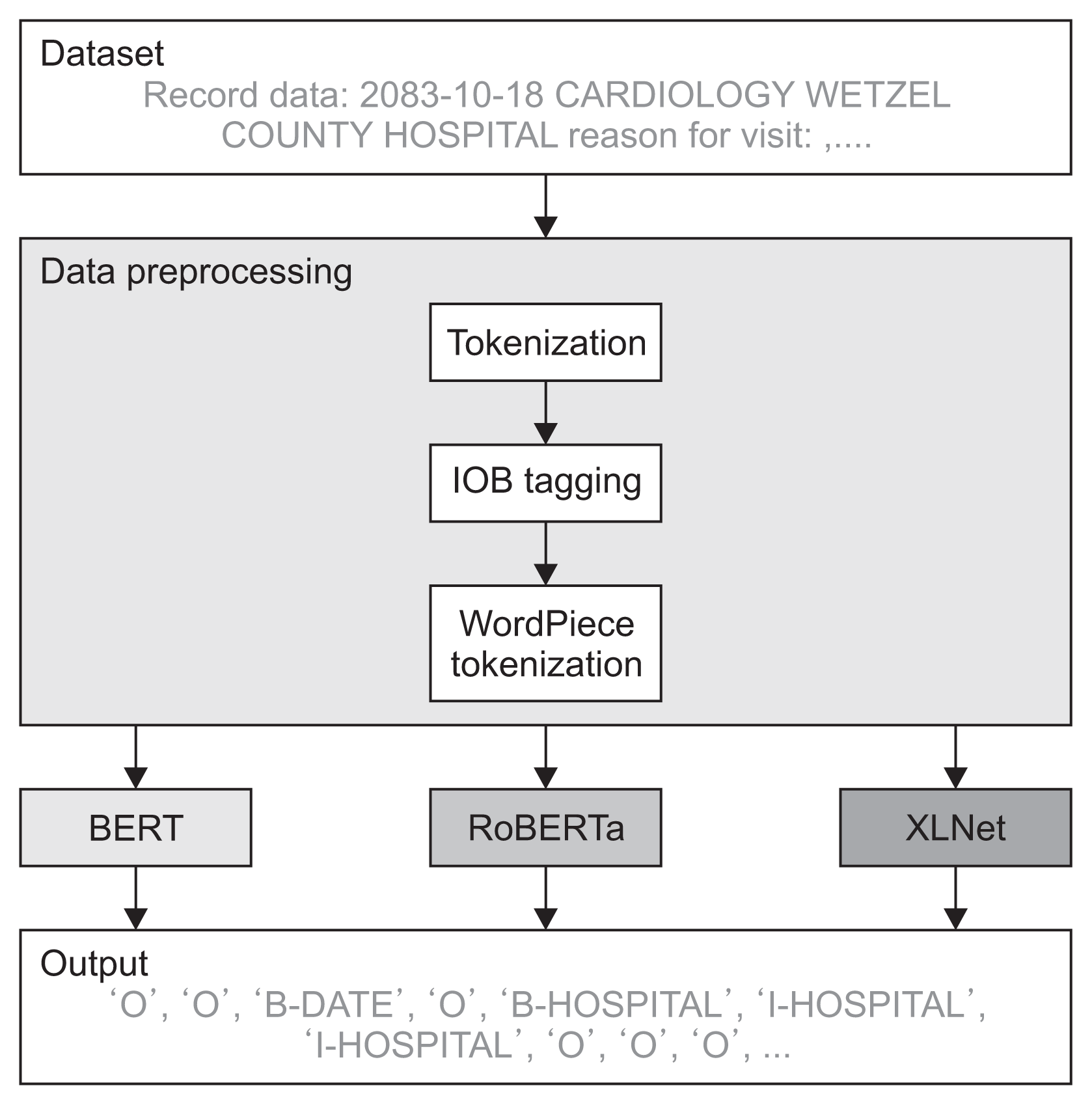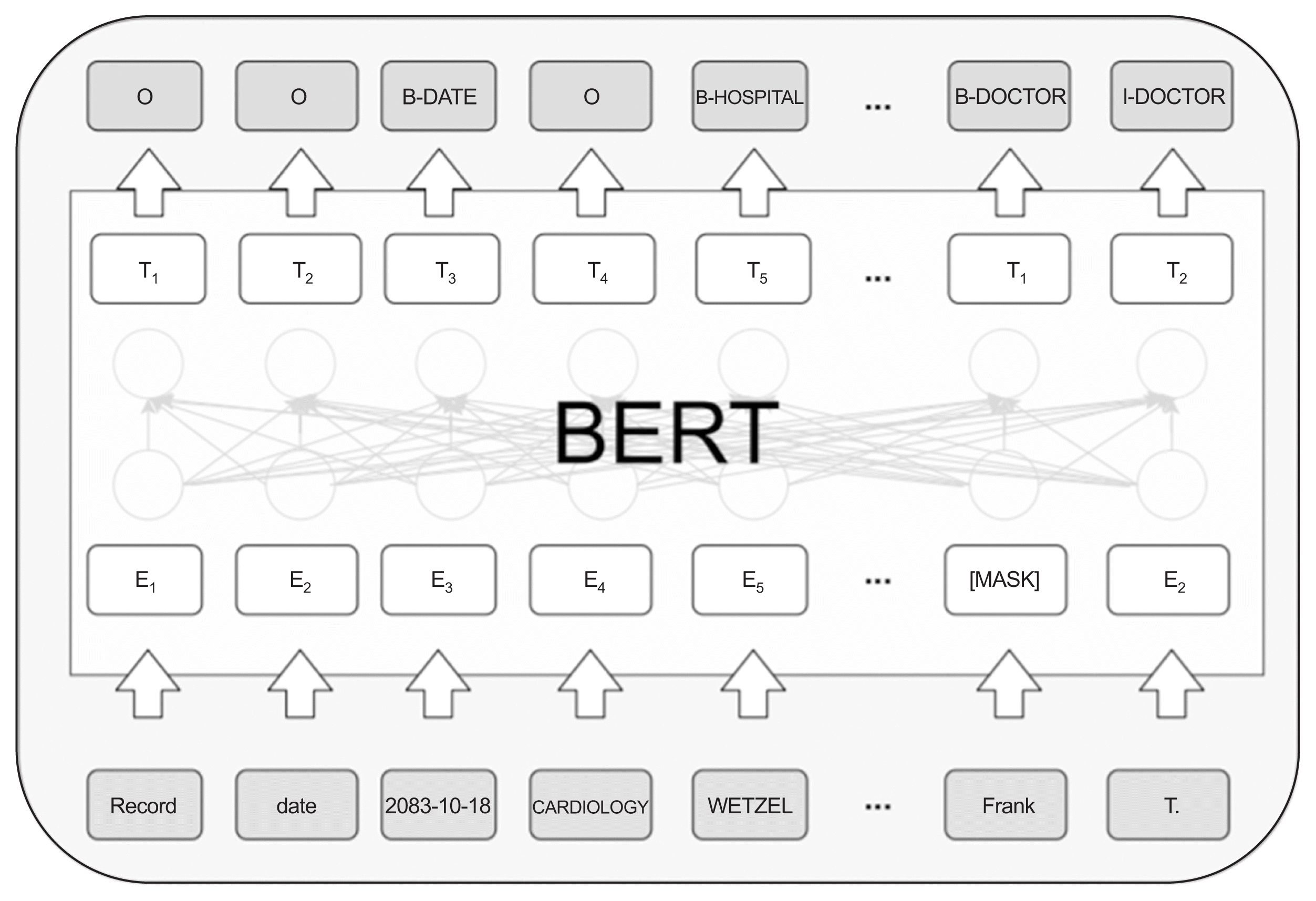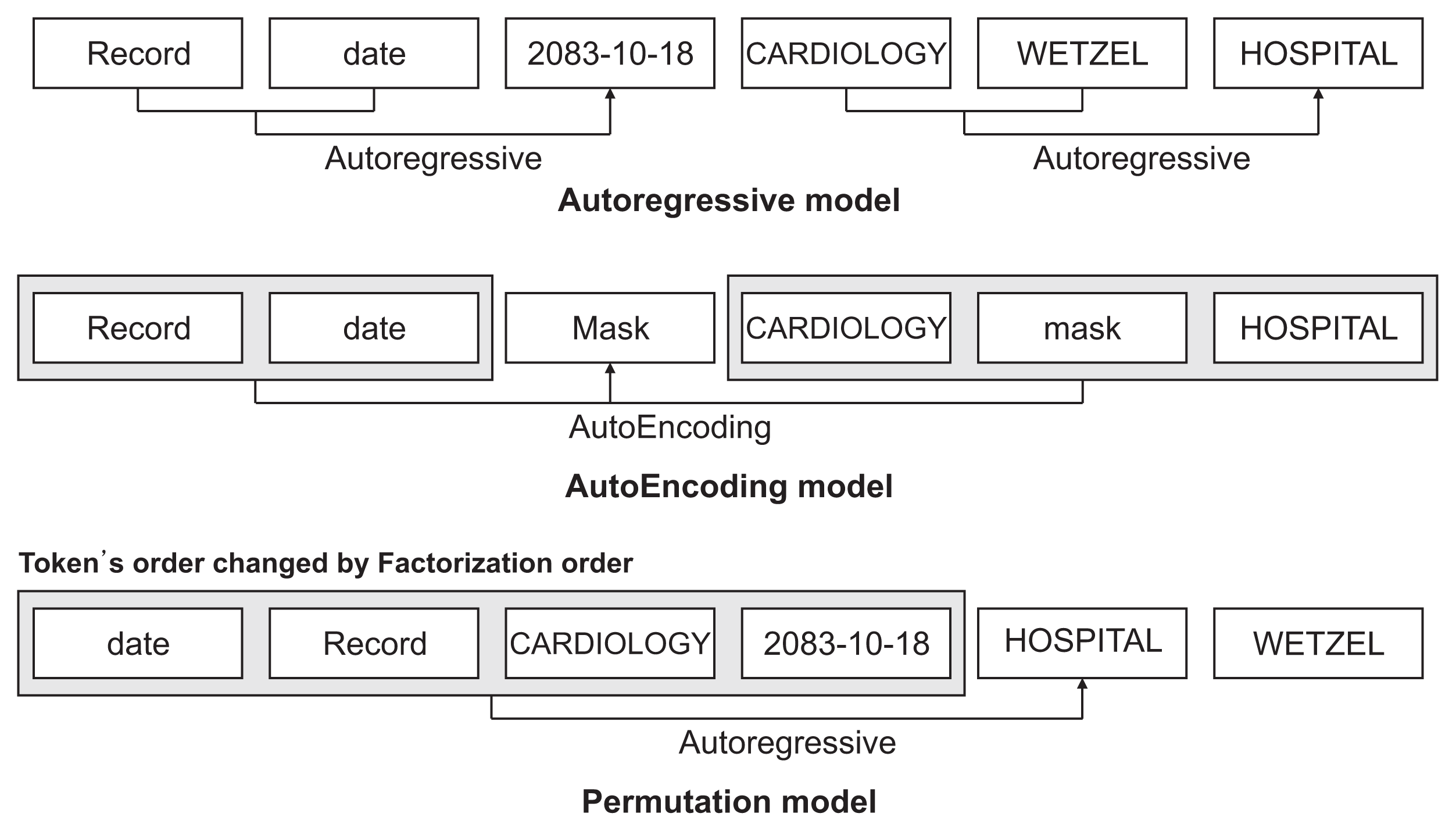1. Park YT, Kim YS, Yi BK, Kim SM. Clinical decision support functions and digitalization of clinical documents of electronic medical record systems. Healthc Inform Res. 2019; 25(2):115–23.

2. Choi YI, Park SJ, Chung JW, Kim KO, Cho JH, et al. Development of machine learning model to predict the 5-year risk of starting biologic agents in patients with inflammatory bowel disease (IBD): K-CDM network study. J Clin Med. 2020; 9(11):3427.

3. Seong D, Yi BK. Research trends in clinical natural language processing. Commun Korean Inst Inf Sci Eng. 2017; 35(5):20–6.
4. Shin SY. Privacy protection and data utilization. Healthc Inform Res. 2021; 27(1):1–2.

6. Shin SY, Park YR, Shin Y, Choi HJ, Park J, Lyu Y, et al. A de-identification method for bilingual clinical texts of various note types. J Korean Med Sci. 2015; 30(1):7–15.

7. Lafferty J, McCallum A, Pereira FC. Conditional random fields: probabilistic models for segmenting and labeling sequence data. In : Proceedings of the 18th International Conference on Machine Learning (ICML); 2001 Jun 28–Jul 1; San Francisco, CA. p. 282–9.
8. Wang Y. Annotating and recognising named entities in clinical notes. In : Proceedings of the ACL-IJCNLP 2009 Student Research Workshop; 2009 Aug 4; Suntec, Singapore. p. 18–26.

9. Dreyfus SE. Artificial neural networks, back propagation, and the Kelley-Bryson gradient procedure. J Guid Control Dyn. 1990; 13(5):926–8.

10. Team AI Korea. Recurrent neural network (RNN) tutorial, Part 1 [Internet]. [place unknow]: Team AI Korea;2015. [cited at 2022 Jan 10]. Available from:
http://aikorea.org/blog/rnn-tutorial-1/
.
11. Hochreiter S, Schmidhuber J. Long short-term memory. Neural Comput. 1997; 9(8):1735–80.

12. Liu Z, Yang M, Wang X, Chen Q, Tang B, Wang Z, et al. Entity recognition from clinical texts via recurrent neural network. BMC Med Inform Decis Mak. 2017; 17(Suppl 2):67.

13. Mikolov T, Chen K, Corrado G, Dean J. Efficient estimation of word representations in vector space [Internet]. Ithaca (NY): arXiv.org;2013. [cited at 2022 Jan 10]. Available from:
https://arxiv.org/abs/1301.3781
.
14. fastText [Internet]. Menlo Park (CA): Facebook Inc.;2020. [cited at 2022 Jan 10]. Available from:
https://fast-text.cc/
.
15. Peters ME, Neumann M, Iyyer M, Gardner M, Clark C, Lee K, et al. Deep contextualized word representations [Internet]. Ithaca (NY): arXiv.org;2018. [cited at 2022 Jan 10]. Available from:
https://arxiv.org/abs/1802.05365
.
16. Kim JM, Lee JH. Text document classification based on recurrent neural network using word2vec. J Korean Inst Intell Syst. 2017; 27(6):560–5.

17. Stubbs A, Kotfila C, Uzuner O. Automated systems for the de-identification of longitudinal clinical narratives: overview of 2014i2b2/UTHealth shared task Track 1. J Biomed Inform. 2015; 58 Suppl. (Suppl):S11–S19.
19. Devlin J, Chang MW, Lee K, Toutanova K. BERT: pre-training of deep bidirectional transformers for language understanding [Internet]. Ithaca (NY): arXiv.org;2018. [cited at 2022 Jan 10]. Available from:
https://arxiv.org/abs/1810.04805
.

20. Lan Z, Chen M, Goodman S, Gimpel K, Sharma P, Soricut R. ALBERT: a lite BERT for self-supervised learning of language representations. In : Proceedings of the 8th International Conference on Learning Representations (ICLR); 2020 Apr 26–30; Addis Ababa, Ethiopia.
21. Liu Y, Ott M, Goyal N, Du J, Joshi M, Chen D, et al. ROBERTa: a robustly optimized BERT pretraining approach [Internet]. Ithaca (NY): arXiv.org;2019. [cited at 2022 Jan 10]. Available from:
https://arxiv.org/abs/1907.11692
.
23. Kingma DP, Ba J. Adam: a method for stochastic optimization [Internet]. Ithaca (NY): arXiv.org;2014. [cited at 2022 Jan 10]. Available from:
https://arxiv.org/abs/1412.6980
.
24. Yang Z, Dai Z, Yang Y, Carbonell J, Salakhutdinov RR, Le QV. Xlnet: generalized autoregressive pretraining for language understanding. Adv Neural Inf Process Syst. 2019; 32:5754–64.
26. Warby SC, Wendt SL, Welinder P, Munk EG, Carrillo O, Sorensen HB, et al. Sleep-spindle detection: crowdsourcing and evaluating performance of experts, non-experts and automated methods. Nat Methods. 2014; 11(4):385–92.

27. Kim YW, Cho N, Jang HJ. Trends in Research on the security of medical information in Korea: focused on information privacy security in hospitals. Healthc Inform Res. 2018; 24(1):61–8.

28. Kingma DP, Welling M. Auto-encoding variational bayes [Internet]. Ithaca (NY): arXiv.org;2013. [cited at 2022 Jan 10]. Available from:
https://arxiv.org/abs/1312.6114
.
29. Goodfellow I, Pouget-Abadie J, Mirza M, Xu B, Warde-Farley D, Ozair S, et al. Generative adversarial nets. Adv Neural Inf Process Syst. 2014; 27:2672–80.
30. Alsentzer E, Murphy JR, Boag W, Weng WH, Jin D, Naumann T, et al. Publicly available clinical BERT embeddings [Internet]. Ithaca (NY): arXiv.org;2019. [cited at 2022 Jan 10]. Available from:
https://arxiv.org/abs/1904.03323
.




 PDF
PDF Citation
Citation Print
Print






 XML Download
XML Download